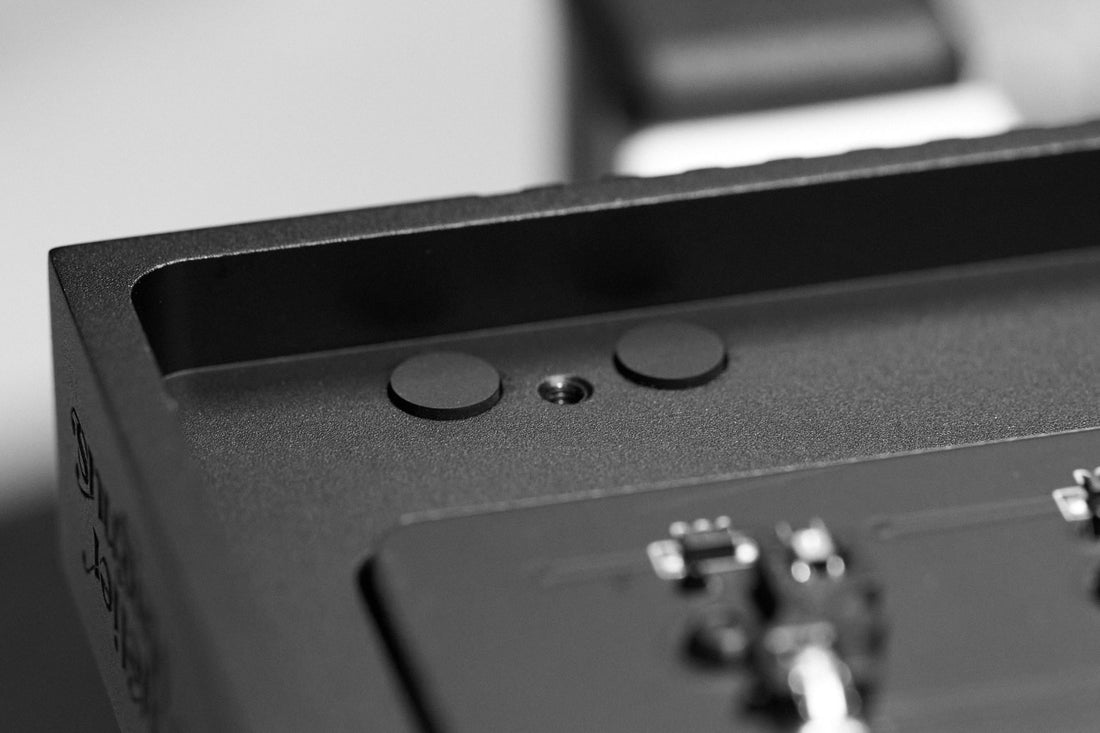
Listening, Learning, and Improving the Force Break
At Atelier Magnus, we pride ourselves on listening — not just to praise, but to critique, suggestions, and sometimes even the faintest ping that shouldn’t be there.
When we launched the slate75, we thought we had the force break dialed in. Our solution? Eighteen silicone pads, placed strategically between the top and bottom case. On paper, it worked. In practice, something wasn’t quite right.

The Problem
The case recesses — where the pads sit — were slightly too deep. So even with the silicone in place, the two halves of the case still touched. That tiny bit of contact was enough to carry a metallic ping we had worked hard to eliminate.
First Fix Attempt
Taking inspiration from kinematic design — where stability comes from the minimum number of contact points — we tried a lighter approach.
We reduced the pad count to just eight: four in the corners, four around the center. The theory was that fewer contact points would mean better isolation. In reality, it backfired. The pads were too soft and too few. The frame lost support, and the ping was still there — maybe even more pronounced.

The Real Fix
So we went back to sixteen pads. But this time, we added something: a 3D-printed shim under each one to raise them higher, ensuring proper contact with the top case.
That made all the difference.
Now the pads could do what they were meant to do — float the top case, evenly distribute force, and kill the ping. With the added height, we could apply just enough screw torque to secure the board without over-compressing the silicone into ineffectiveness.
What We Learned
Sometimes minimalism isn’t about reducing parts — it’s about finding the exact amount needed. In our case, the right solution wasn’t “less” — it was sixteen pads, properly lifted, held together with a light touch.
It took some trial and error, late nights, and real feedback from early customers. But we got there.
And to us, that’s what craft is all about.
